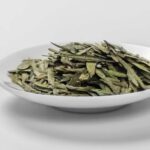Poison hemlock (Conium maculatum) is a highly toxic plant that has been the cause of numerous poisoning incidents throughout history. It is native to Europe and North Africa, but it has been introduced to many other parts of the world, including North America. Poison hemlock is often confused with other toxic plants, such a nos water hemlock, wild parsnip, and Queen Anne’s lace. However, there are several key differences between these plants that can help you identify poison hemlock in the wild. Too
Differences with other Toxic Plants
Poison hemlock is a biennial plant that can grow maximum 10 feet tall. In its first year, it grows a rosette of leaves close to the ground, which can be mistaken for parsley or wild carrot. In its second year, it grows a tall, branched stem with small, white flowers arranged in an umbrella-shaped cluster. The stem is smooth and hairless, and it has purple spots or streaks. The leaves are fern-like and can be up to three feet long. They are dark green and shiny and have a distinctive odour when crushed.
- Water Hemlock:
Water hemlock, another toxic plant, is often mistaken for poison hemlock. However, water hemlock is a perennial plant with hollow stems that have purple spots. Its leaves are smaller and less divided than poison hemlock, and they have a toothed edge. Water hemlock also has clusters of small, white flowers, but they are arranged differently from poison hemlock. Water hemlock is also known to have a much faster onset of symptoms, including seizures, than poison hemlock.
Wild parsnip and Queen Anne’s lace
Wild parsnip and Queen Anne’s lace are also often mistaken for poison hemlock.Parsnip has yellow flowers and leaves that are similar in shape to poison hemlock, but they are a lighter shade of green and have a hairy texture. Queen Anne’s lace has white flowers and leaves that are more finely divided than poison hemlock, but they lack the distinctive odor of poison hemlock.
Poison hemlock is highly toxic, and all parts of the plant contain the toxin coniine, which can cause paralysis and death in humans and animals. Symptoms of poisoning include dilated pupils, dry mouth, confusion, dizziness, and difficulty breathing. If you suspect you have ingested poison hemlock, seek medical attention immediately.
Efforts to Control of Poison Hemlock
It is important to control its growth, especially in areas where livestock or wildlife graze. Here are some efforts to control poison hemlock:
Physical control
The most effective way to control poison hemlock is by physically removing it. This can be done by hand-pulling the plant, digging it up, or cutting it down. It is important to wear gloves and protective clothing when handling poison hemlock, as the sap can be absorbed through the skin.
Chemical control
Herbicides can be used to control poison hemlock. The most effective herbicides are those that contain glyphosate, triclopyr, or picloram. However, care must be taken when using herbicides, as they can also harm non-target plants and animals.
Grazing management
Poison hemlock is often found in areas where livestock graze. Grazing management can be used to control poison hemlock by preventing livestock from accessing areas where poison hemlock is growing. This can be done by fencing off areas or rotating grazing areas.
Biological control
Biological control methods, such as the use of insects or pathogens, have been investigated for the control of poison hemlock. However, to date, no effective biological control methods have been identified.
Preventive measures
Prevention is key in controlling poison hemlock. It is important to prevent the plant from establishing itself in the first place by monitoring for new plants and removing them before they can spread. It is also important to properly dispose of poison hemlock plants to prevent them from reseeding or spreading through vegetative reproduction.
Read about: Most poisonous Plant
Overall, a combination of physical and chemical control methods, along with grazing management and preventive measures, can be used to effectively control poison hemlock. It is important to carefully follow all safety instructions and consult with a professional if needed.
Conclusion
In conclusion, poison hemlock can be identified by its tall, branched stem with small, white flowers arranged in an umbrella-shaped cluster, dark green, fern-like leaves with a distinctive odor, and smooth, hairless stem with purple spots or streaks. It is often confused with other toxic plants, such as water hemlock, wild parsnip, and Queen Anne’s lace, but there are several key differences between these plants that can help you identify poison hemlock in the wild. Remember to always be cautious when foraging for wild plants and to properly identify them before consuming them.




